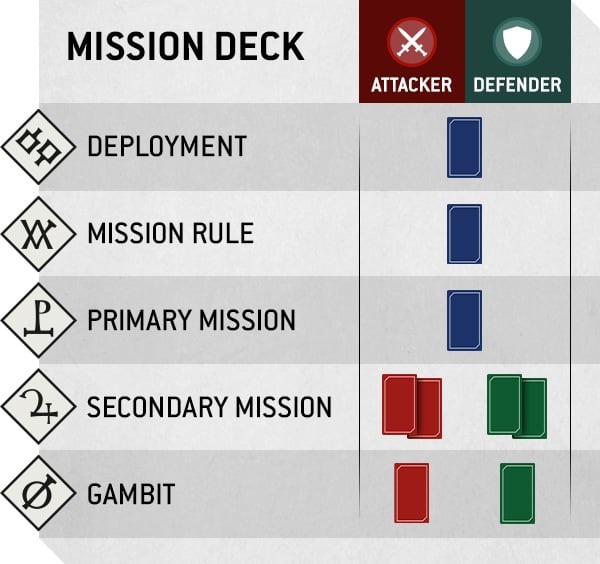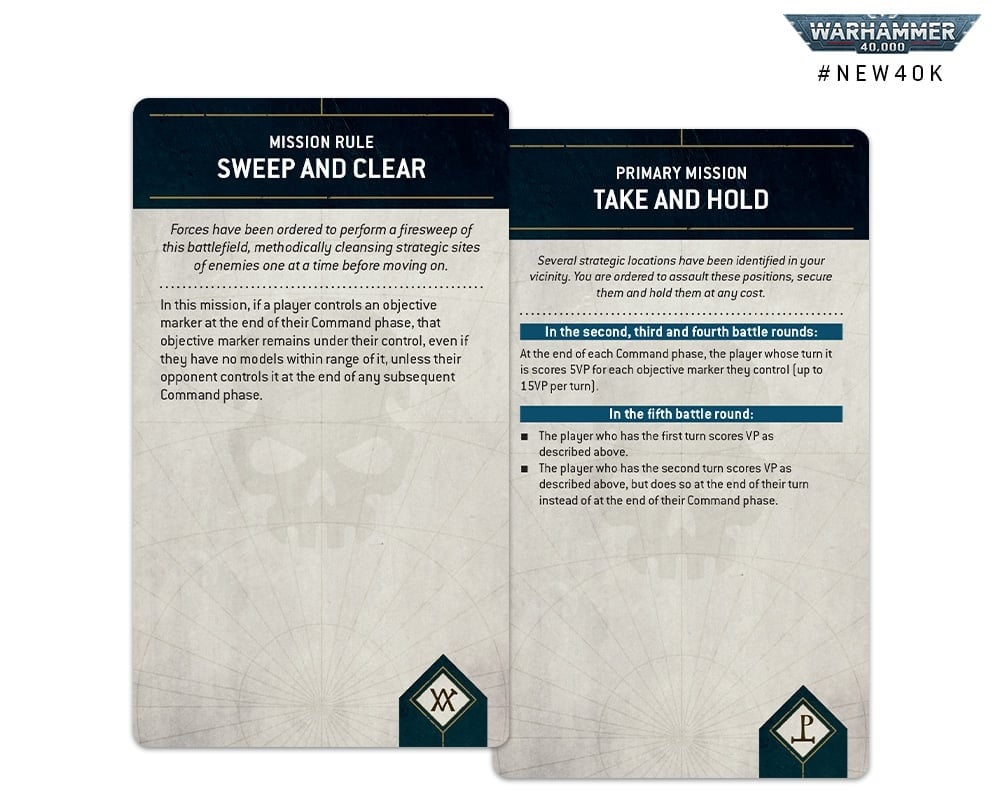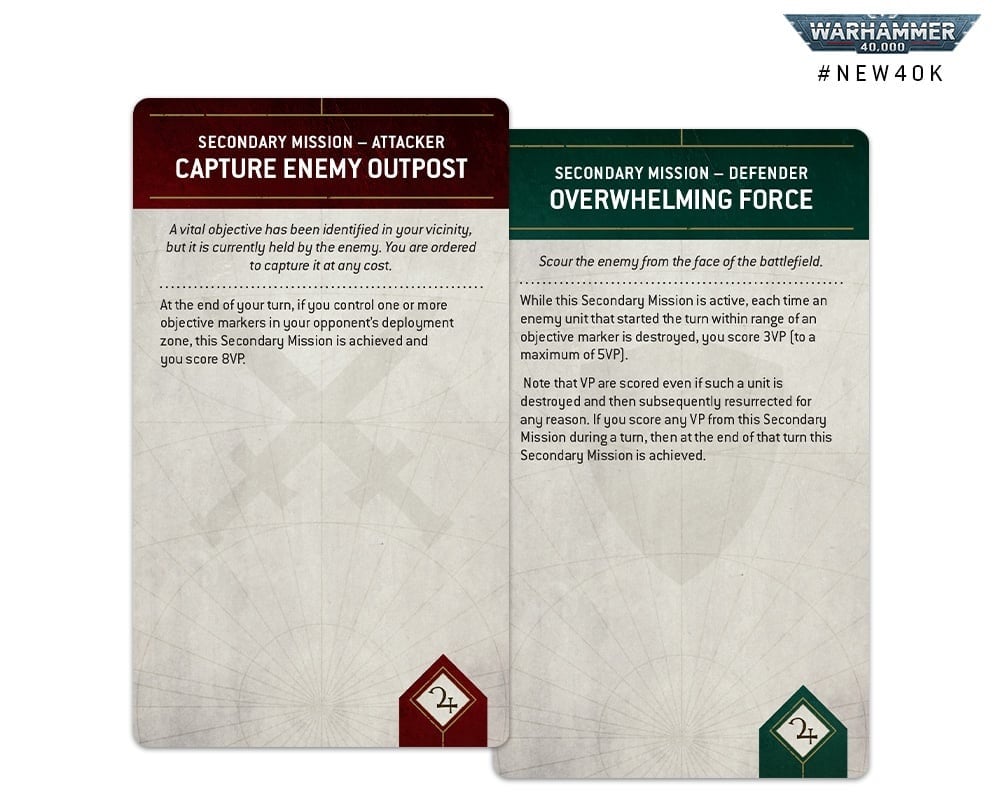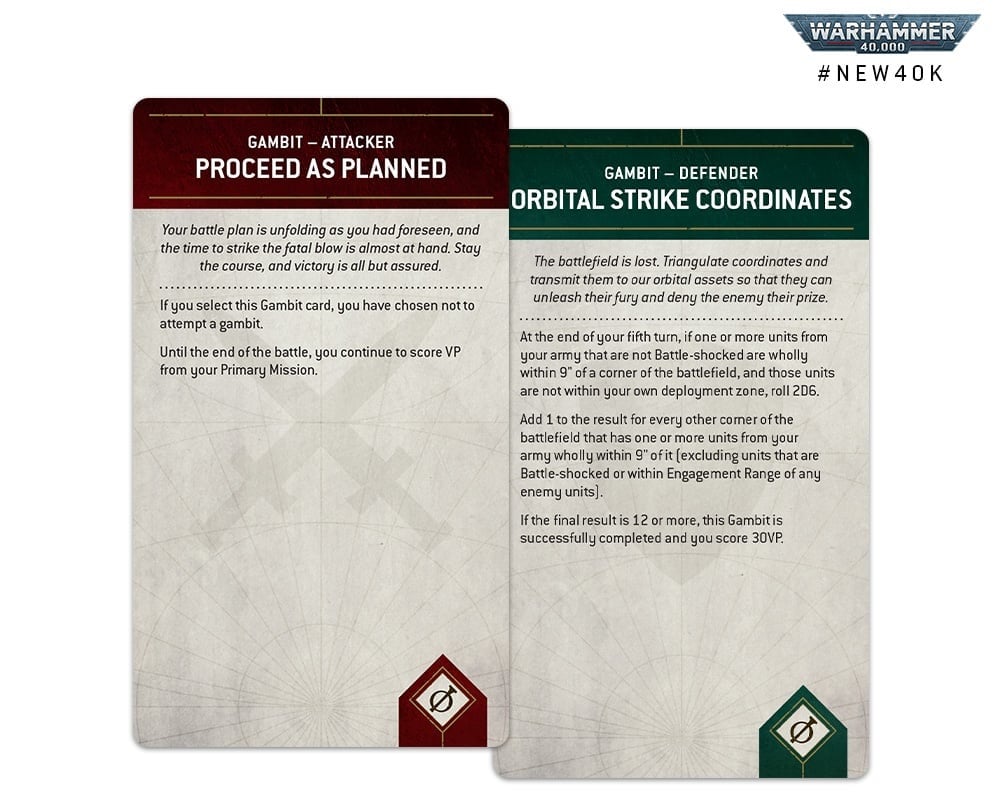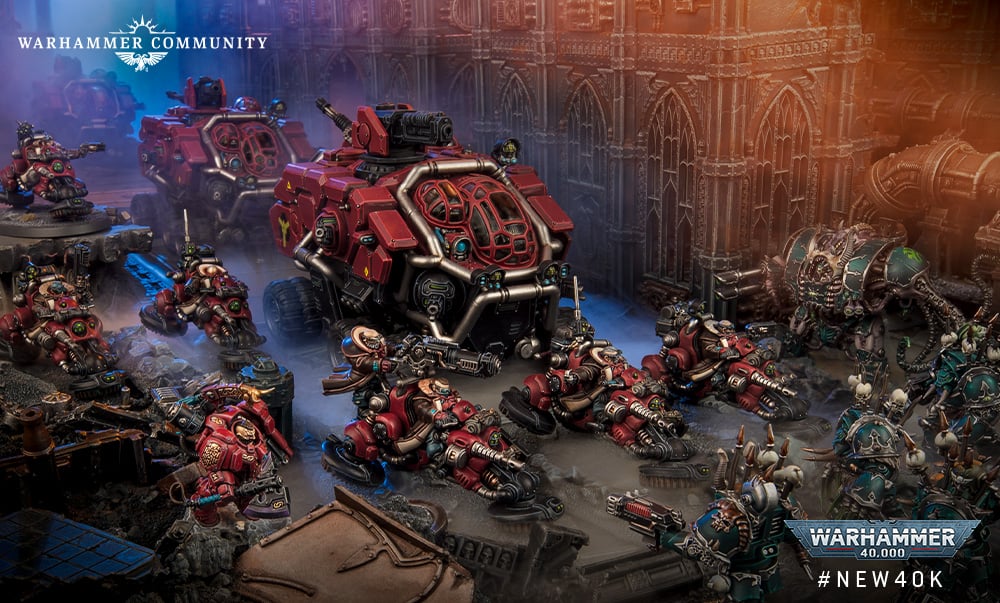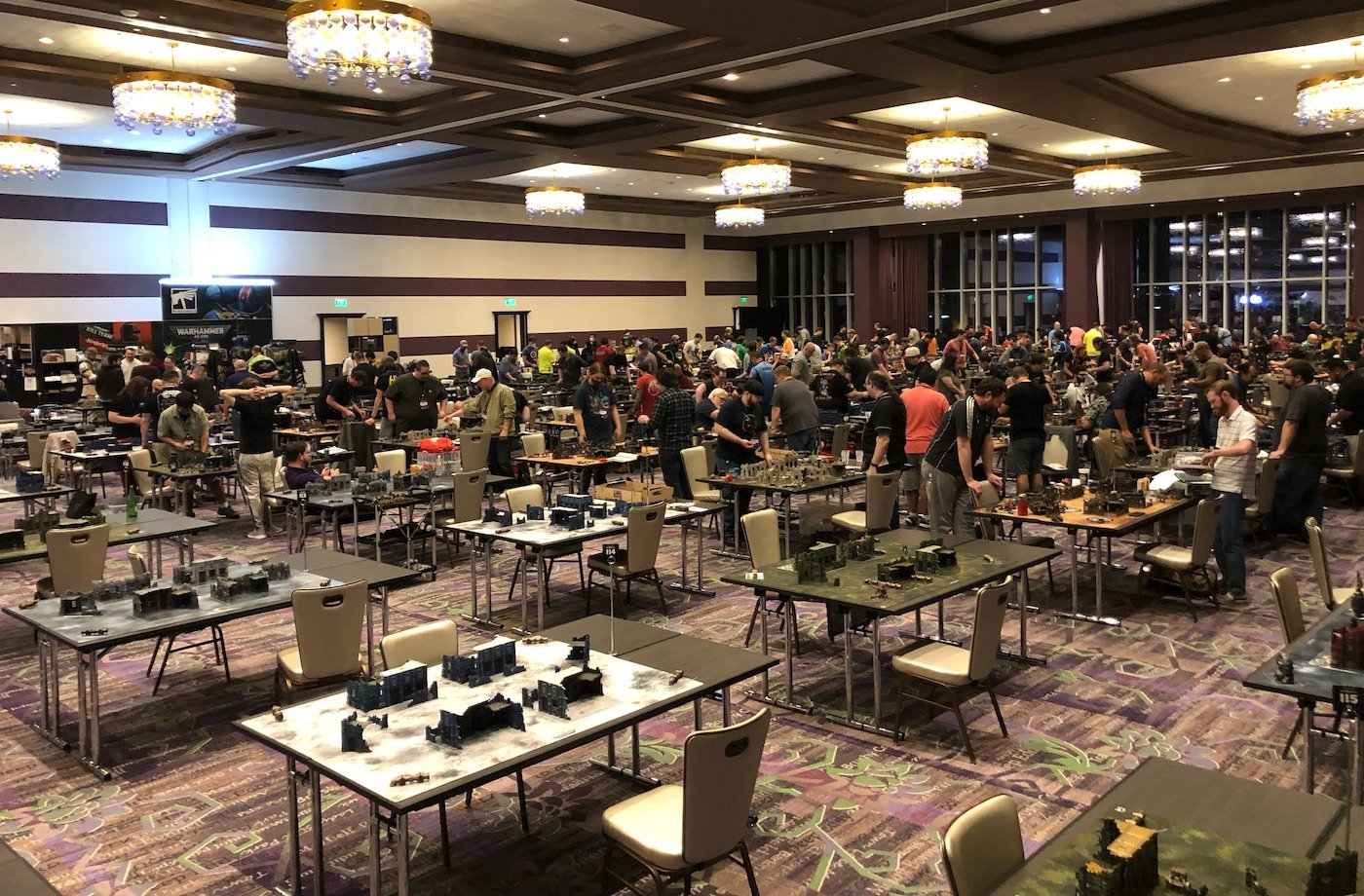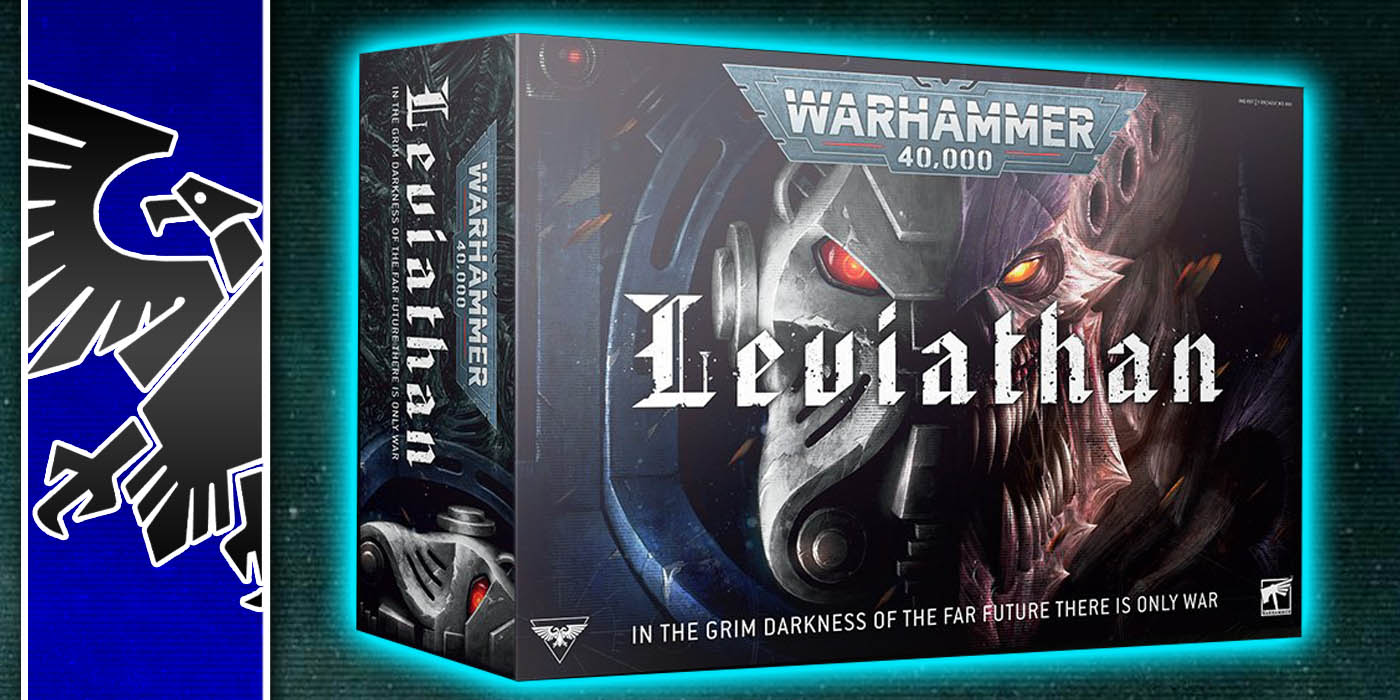Warhammer 40K- 10th Edition’s New Mission System Won’t Please Everyone
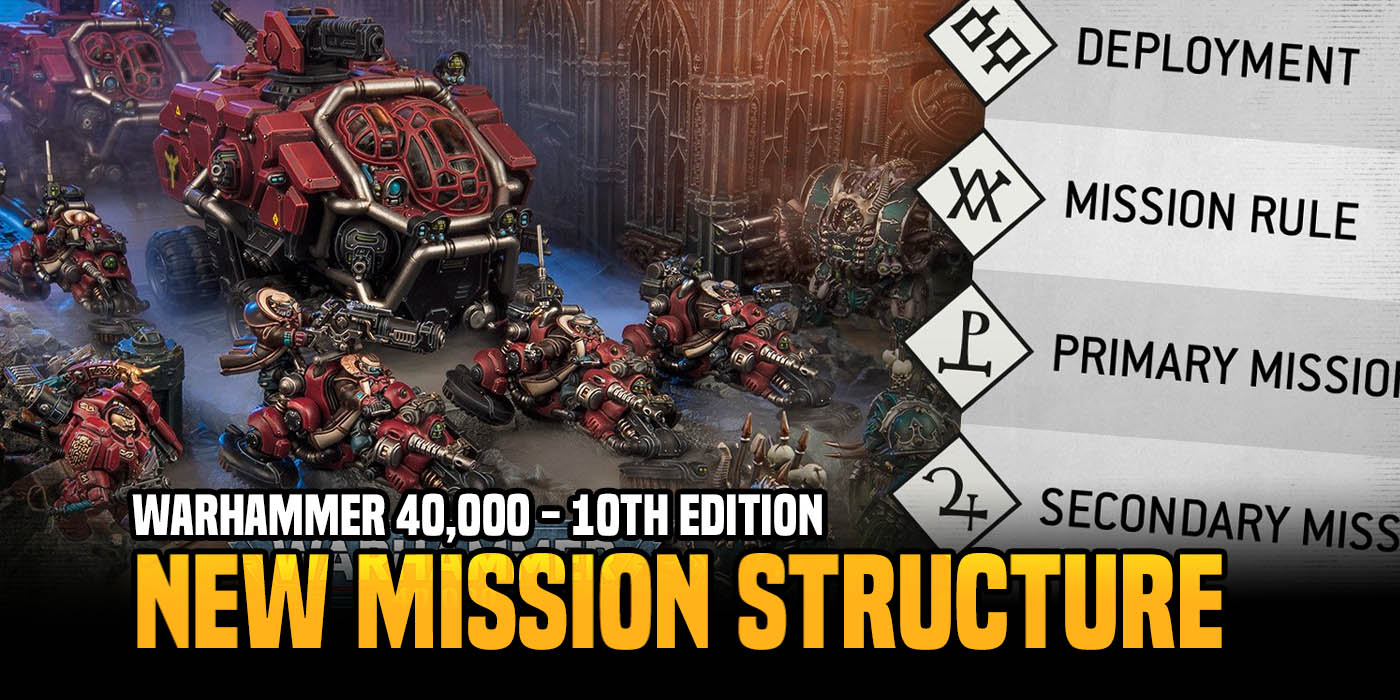
The newly announced Warhammer 40K 10th Edition mission rules have a lot of people upset. Let’s talk.
The last few weeks have continued to see a lot of new information about Warhammer 40,000 10th Edition come out. We’ve got bits of the core rules, unit rules, and even army rules. Recently we got a peak at how missions work in the edition of the game. These rules have their head in the right place and introduce some cool ideas. However, the execution of them fails to hit the mark, and at least one of them ranks among some of the shakiest rules we’ve seen. Let’s take a look at what’s going on.
The Basics
In the core book, you will find only one very basic mission. Outside of that, missions are based on the Chapter Approved system. Players first get 7 decks of cards, one deployment deck, one mission rule deck, one primary mission deck, and one secondary mission and gambit deck per player. Players then randomly pick one deployment card, one mission rule card, and one primary mission card to form the basis of the mission. You’ll then need to determine attacker and defender, and players each pick two Secondary mission cards. Later each player has the option of getting a gambit or using the default card. This system is designed for both casual and competitive play. Events also have the option of pre-picking cards for the mission.
The Good
This system does allow for a fair bit of flexibility in missions. You get a lot of combinations and can generate stuff without arguing over what mission you want to play. Missions may feel fresher this way as, in theory, you won’t have played any particular combo a lot. This new 40k mission system borrows a lot from games like Star Wars: Legion and Star Wars: Armada. It also allows GW to update missions for seasons by simply releasing a new card pack every few months.
The Complications
This is not a simple system. Though 10th promises to simplify things, this is, in fact a pretty complex way of making missions. You need 7 decks of cards and will, at minimum pull 9 cards from them. These need to all be placed somewhere, taking up space. It’s also a lot to remember, with a ton of moving parts to remember per mission.
To make matters more complicated each player can opt to play with Tactical Missions. With these, each time you score a secondary mission you discard that mission and draw a new one. These are normally scored at the end of your turn, so you won’t draw more than 2 new cards a turn, it seems. However, this still means if both players are using it you could use something like 25 cards for a single mission. I think players, especially new ones, can really struggle to keep track of all these moving parts. And that’s before we even get to the last part.
Gambits
Before we get started, let me say – I really like the idea of gambits. They are designed to counter the mid-game realization that one player is so far ahead that the other can’t catch up. To give the trailing player a chance to stay in the game, you have the option at the end of turn 3 to ignore the primary objective and take on a new and “intensely challenging” objective. Pulling this off will give you a ton of points. On the face of this it’s a good idea, allowing the game to be switched up. It helps keep things interesting longer. It is certainly designed to minimize players “talking out” the last couple of turns and quitting the game early.
However, the one gambit we’ve seen is an example of some of the shakiest rules I’ve seen. Orbital Strike Coordinates triggers at the end of your fifth turn. Effectively if you have a unit in an enemy corner at the end of the game, roll 2d6, and on a 12 you get 30 VP. If you have units in multiple corners you can get up to a +3 bonus to the roll.
The Issues
Now the roll is the first big issue here. Rolling 12 on 2d6 isn’t “intensely challenging” it’s random. Hiding a unit in an enemy corner to try and win the game also isn’t super hard, or fun. So this gambit doesn’t really hit the mark there. At the end of the day, however having your game come down to one super random roll just isn’t very fun (you tabled all but one of my units, but I just rolled boxcars so I win! Woo!). Especially when it’s a roll that’s not really connected to the rest of the game.
That’s of course, if 30 pts, the equivalent of two turns of the primary, is even enough to turn the tide. In a real blowout this rule wont even matter. So its main effect is taking a fairly close and hard-fought game and making that just be determined by this random roll. It’s just not well implemented, and this is one of only three gambits at the start of the game.
Events Won’t Use It
At the end of the day I’m just not sure that this way of doing missions will work great. It’s too complicated for beginners and just a lot to keep track of. Events also almost certainly won’t use it. If they use it at all they will pre-pick the cards. I also wouldn’t be surprised to see them do away, or modify gambits entirely. It’s just overall a bit of a clunky system. It doesn’t fix the game’s over-reliance on complicated secondaries that people disliked about ITC systems in 8th and 9th. It might work well for some casual and Crusade games, but even then, it’s going to be limited. Obviously, we will have to see how it all plays out. It’s also possible, that later sets of cards, with better gambits for instance, might implement these ideas much more strongly. For now however this seems like a flawed system.
Let us know what you think of system, down in the comments!

